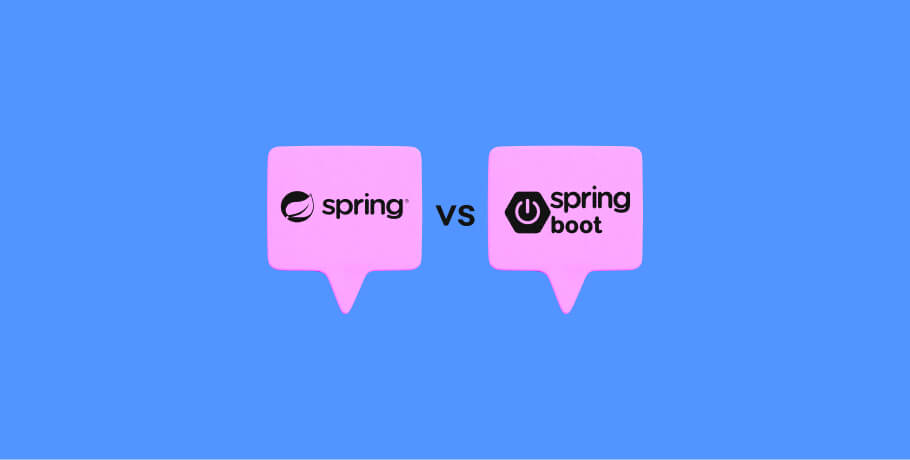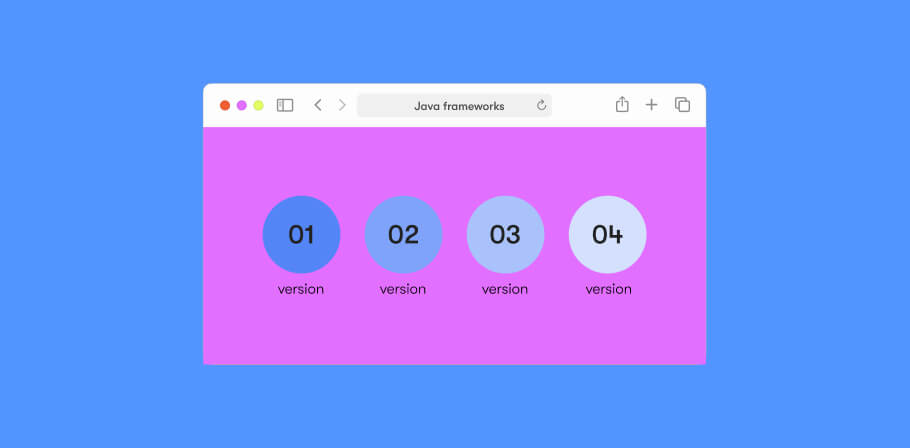Understanding the pros and cons of Java is essential, as it allows you to determine if Java is right for your project. After all, while Java is one of the most widely used programming languages and hundreds of companies are looking to hire Java developers at any given time, that doesn’t mean it's perfect for every situation. Here’s everything you need to know about the Java pros and cons.
A quick look at the history of Java
Created by Sun Microsystems (now Oracle) in 1995, the Java programming language (not to be confused with the separate JavaScript) was an attempt to launch a new language that would let consumer electronics effectively communicate with one another. Java had the distinct ability to provide interactivity and support multimedia, making it particularly well-suited to another newly emerging technology: the World Wide Web.
Java was highly unique when it initially launched. While other programming languages were translated by compilers to create instructions for specific computing devices, Java took a different approach. The Java compiler converted code into Bytecode, which was interpreted by the Java Runtime Environment (JRE) or the Java Virtual Machine (JVM) to essentially translate it for the host. As a result, Java code could run on a wide array of platforms. This proved particularly useful during the early days of the internet, as webpages were opened by many different types of computers, so websites and web applications benefited from Java’s versatility.
Later, Java moved beyond the web. As cellular technology emerged, Java found a home there, and today, Java for mobile app development is incredibly popular, again providing versatility that’s beneficial when cross-platform compatibility is a concern.
While Java was created by Oracle, it’s open-source. Oracle remains involved in support, but there’s also a large community that assists with its ongoing development and creates useful tutorials for others.
Top 8 Java advantages
Before you start digging into Java development frameworks for your next project, it’s wise to understand what Java brings to the table. Here’s an overview of eight advantages of Java.
1. Simple general-purpose language
One of the main Java advantages is that it’s a general-purpose programming language – a category that includes C, PHP, and Python. That makes Java programming extremely versatile, allowing it to work well for a wide variety of needs.
Additionally, Java is comparatively simple, allowing programmers to learn it with relative ease. It’s essentially a high-level programming language that gives Java developers a chance to focus more on what they want to accomplish instead of the nuances of how the language works, thus speeding up software development.
Java doesn’t rely on complex features like the explicit pointers, unions, and structures that are present in alternatives like C. Additionally, its syntax is straightforward. As a result, implementing the code is far easier.
Additionally, with Java Integrated Development Environments (IDEs), creating code is more straightforward. A Java IDE provides tools by bundling critical features, providing editing, compiling, interpreting, and debugging capabilities through a single unified user interface (UI).
2. Procedural with object-oriented support
While Java is often referred to as an object-oriented programming (OOP) language, it’s technically a procedural language with object-oriented support. Essentially, it’s a hybrid language, making it both highly usable and incredibly agile.
Java’s OOP features add a degree of simplicity to the language, particularly when it comes to implementation. OOP also assists when maintaining large code is a concern, creating opportunities to break it down into smaller fragments.
By grouping variables and functions based on their context and labeling them, it’s possible to refer to them elsewhere. However, Java doesn’t require the use of objects, so there isn’t a need for programmers to learn additional languages to use a procedural approach if the situation demands it.
3. Heightened security
While no programming language is inherently protected against all hacks or automatically vulnerability-free, Java offers some heightened security by safeguarding against specific security flaws found in some other languages. For example, the lack of pointers can limit unauthorized access, overcoming a problem that’s commonly seen when programming in C. Similarly, the use of encapsulation, inheritance, and abstraction can further increase security.
Additionally, Java has Security Manager, a policy that allows programmers to outline access rules. This makes running Java in a sandbox possible, which can significantly reduce risk.
4. Platform-independent
The Java programming language is platform-independent. It embraces the concept of write-once-run-anywhere (WORA), allowing a Java application to run on multiple platforms without requiring any code adjustments.
For example, Java programs can run on Windows, Linux, and other computing operating systems without any code changes. Similarly, Java mobile applications typically work on both Android and iOS devices. Generally, the only requirement for a system to run a Java application is for it to have Java in it. As a result, the language is highly portable.
5. Multithreaded
A multithreaded CPU is more efficient when it comes to simultaneous task execution, though it requires applications written to take advantage of the capability to be at its best. Java supports multithreading. During Java application development, code can be created to make the most of multithreading, leading to stronger performance through wise CPU resource usage.
6. APIs
Application programming interfaces (APIs) are command sets or methods that define communication between various tasks. With a broad selection of APIs available, Java development is typically streamlined. Additionally, it makes the integration of existing software and new applications more manageable, as the needed functionalities don’t have to be coded from scratch.
7. Memory management
Memory management in Java relies on a degree of separation. Memory space is divided into heap and stack spaces, and the JVM can allocate memory appropriately to assist with organization, storage, and restoration. These memory allocation capabilities result in greater operational efficiency.
Java also supports automatic garbage collection, eliminating the additional coding that is often required in other languages, like C or C++. Essentially, the JVM can dereference an object without explicit instruction to do so, allowing it to serve as an automatic garbage collector and leading to greater efficiency.
8. A distributed language
Another of the benefits of Java is that it’s a distributed language. Java can share data and programs across systems, essentially remotely collaborating with multiple devices to enhance performance. It also supports Remote Method Invocation (RMI), which enables Java’s distributed processing.
4 disadvantages of Java
While Java is highly capable, that doesn’t mean there aren’t any drawbacks. Here’s a look at four disadvantages of Java.
1. Performance concerns
One of the biggest cons of Java is that it can be sluggish or offer poor performance. Generally, Java uses more memory than some other programming languages, and that can make it slower. Garbage collection, poor caching configurations, and thread deadlocks can all hinder performance if they aren’t correctly managed.
2. Commercial license required
While Java was previously free to all users regardless of their app development focused on commercial purposes, a commercial license is now required. While most would consider the cost low, it’s still an added expense that businesses have to shoulder.
3. GUI building
Creating a graphical user interface (GUI) is essential when designing applications, but Java’s desktop UIs lack a native look and feel. Some GUI builders — like Swing, JavaFX, and JSF — can overcome some of these challenges, but they won’t necessarily lead to the same GUI quality when building complex GUIs as you can get by using languages like Python or C# instead.
4. Complex code
While Java isn’t hard to learn, it does lead to complex code, which is particularly wordy. While that makes it easier for many beginner programmers to understand, it makes the code cumbersome and more challenging to scan when compared to more compact alternatives.
Java pros and cons: a comparative summary

When to use Java for your business project
Java is a versatile language that’s well-suited to a range of development projects. Generally, Java is most popular for web applications and mobile apps. The internet is where Java really made a difference in the broader programming landscape, and it was initially the only language officially supported for Android development. As a result, Java remains a strong choice for projects in those arenas, such as dating apps.
Since Java uses the WOTA concept, it’s also a solid choice for cloud applications accessed by a wide array of devices. While Java isn’t the first language that typically comes to mind for big data projects, its ability to process large quantities of information can make it well-suited to the task.
Java is also highly popular for projects involving the Internet of Things (IoT). Java is more secure than some alternatives, and it’s highly versatile. Plus, functioning as a distributed language is beneficial when you’re focused on IoT device integration.
When Java is not the best fit
Generally, Java isn’t ideal for projects that require complex GUIs. Even with the available tools, Java falls behind alternatives when a potentially complicated GUI is needed. While this issue is less present when creating mobile applications, Java generally falls short in the world of complex desktop GUIs. As a result, it’s often best to explore an alternative if you’re focused on desktop application development.
While Java is potentially useful in the world of big data, there are other languages that are potentially better suited to the project. For example, R is often best if your project focuses solely on data analysis, though Python can also work well.
Since Java is memory-intensive, it’s critical to also factor memory usage into the equation. In some cases, the amount of memory required for other aspects of the project may make Java a less-than-ideal choice.
Key takeaways
The pros and cons of Java show that Java is highly capable, which is why it has remained a relevant programming language for so long. Along with being relatively simple and incredibly versatile, it’s more secure than some alternatives and combines procedural and OOP features, effectively giving companies the best of both worlds. Plus, its cross-platform compatibility allows a developer to write the code once and run it anywhere, eliminating the need for coding changes to ensure a Java application will run on multiple operating systems or devices.
However, Java isn’t ideal in all situations. Without the right precautions, Java applications are potentially slower and memory-heavy. Additionally, creating complex GUIs — particularly for desktop — is far easier using some other languages. The resulting code complexities are also a potential pain point, particularly when it comes to ongoing maintenance.
Still, Java is a strong choice for many projects, including mobile application development, IoT, cloud development, and more. As a result, Java is a programming language worth considering, particularly if the strengths of the Java programming language are especially beneficial for your project.

The EPAM Anywhere Editorial Team is an international collective of senior software engineers, managers and communications professionals who create, review and share their insights on technology, career, remote work, and the daily life here at Anywhere.
The EPAM Anywhere Editorial Team is an international collective of senior software engineers, managers and communications professionals who create, review and share their insights on technology, career, remote work, and the daily life here at Anywhere.
Explore our Editorial Policy to learn more about our standards for content creation.
read more


















